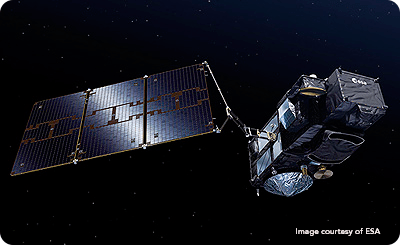Successful launch of Sentinel-3A

On February 17, Sentinel 3A, the third satellite of the European Union’s Copernicus program, was successfully launched from Plesetsk cosmodrome in northern Russia.
The Copernicus program is an ambitious project under which Europe is building up its own earth-observation capability and technology. Previously known as Global Monitoring for Environment and Security, this program comprises six satellite families: Sentinel-1, designed to ensure the continuity of ERS (European Remote Sensing Satellites) and Envisat radar data, Sentinel-2 and -3, dedicated to earth and ocean monitoring; Sentinel-4 and -5, which will be dedicated to atmosphere-based meteorology and climatology missions; and Sentinel 6 or Jason-CS, which will make high precision observations of ocean surface topography. Each satellite weighs about 2.3 tonnes and has been designed for a useful life of at least seven years.
The complete fleet of satellites will provide a huge amount of fundamental images and data for the Copernicus program and will offer a series of key services for a wide range of applications: land monitoring, ocean monitoring, crisis- and catastrophe-management, atmosphere and climate-change monitoring, plus security.
Sentinel 3A will systematically measure the earth’s oceans as well as the ice caps and the atmosphere, providing crucial real-time information for improving general weather forecasts and shipping forecasts.
GMV is playing a key role in the Copernicus program, participating actively in various projects for both the ground and space segment. During launches it provides support services for the mission planning and control systems. GMV is making the following contributions to the Sentinel 3A satellite:
- Responsible for development of the control center installed in ESOC and EUMETSAT
- Responsible for development of the orbital control system installed in EUMETSAT and support for associated operations
- Support for development of the orbital control system and operations in ESOC, including initial LEOP and commissioning operations
- Responsible for development of the mission planning system and responsible for mission planning operations with personnel posted to EUMETSAT (Darmstadt, Germany)
- Responsible for integration, verification and validation (IV & V) of Sentinel 3’s Flight Operations Segment (FOS) for EUMETSAT
- Responsible for development of the onboard software of Sentinel 3’s Ocean and Land Colour Instrument (OLCI) and the Instrument Control Module (ICM)
- Responsible for the EUMETSAT framework contract for provision of support and services for Sentinel 3’s ground segment
- Responsible for the Precise Orbit Determination (POD) service
When the satellite constellation is complete, it will image the entire Earth every six days, transmitting data to ground stations spread throughout the whole world.